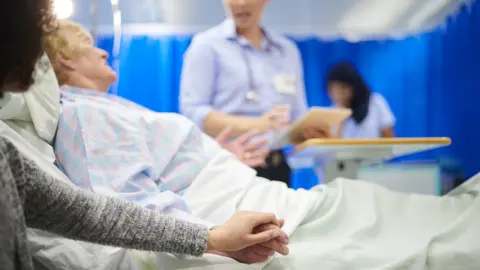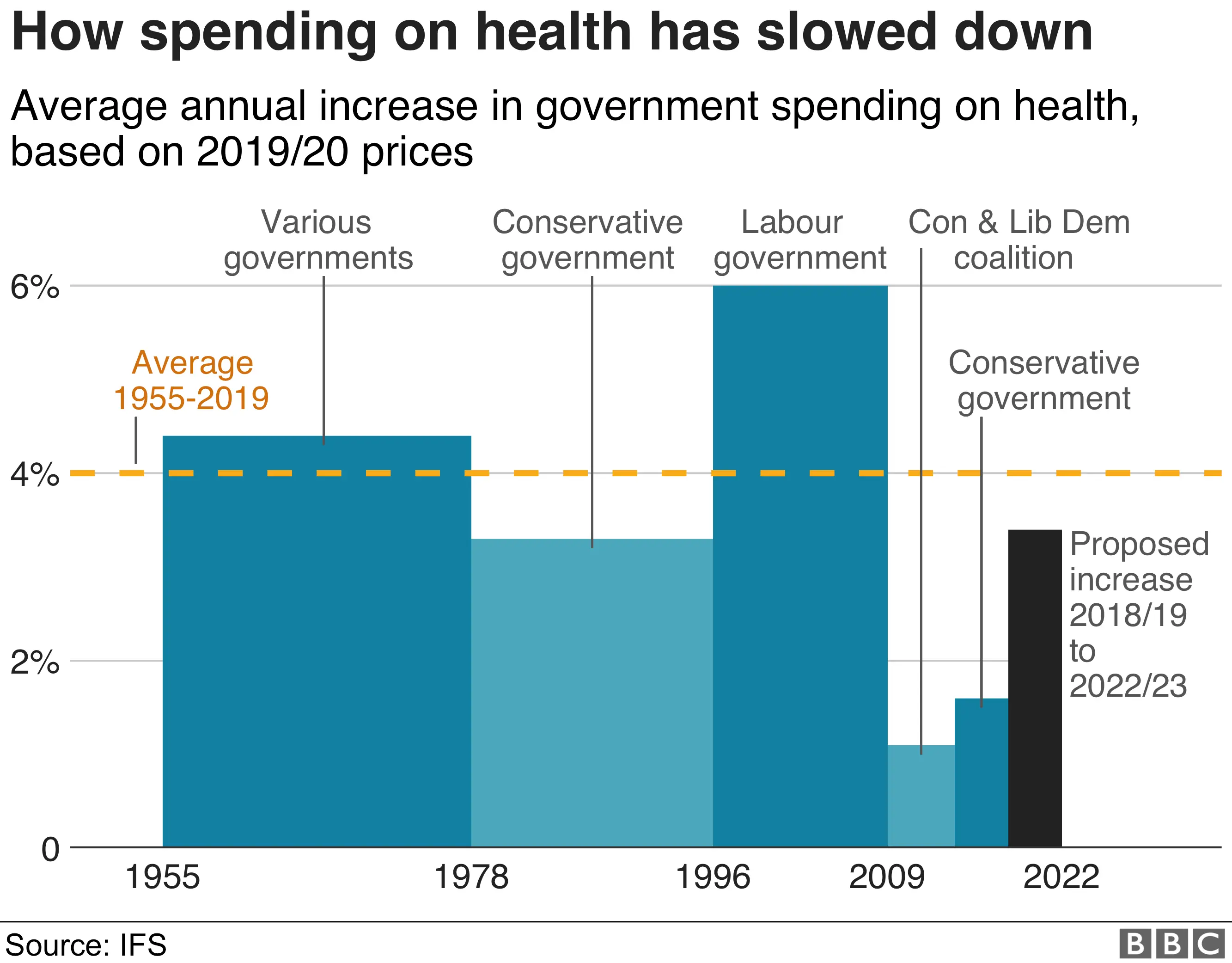Is the NHS facing unprecedented demand?
 sturti
sturtiAccident-and-emergency units in England have recorded their worst performance since current records began.
The latest performance statistics also show a raft of other targets are being missed - including for cancer operations and routine surgery.
The Department of Health and Social Care says this is in part due to unprecedented demand for services. Is this a fair argument?
Has demand accelerated?
Measuring attendances in A&E - the front-door to the NHS - is a good way to look at just how much patient demand there is and an indication about whether the rest of the NHS is coping.
Looking back, from 2006 to 2019 there has been an average 2.2% annual increase in patient attendances at A&E.
In October this year, there were about 2.2 million attendances at A&E departments - an increase of 4.4% compared with October 2018 (although just short of the all-time record).
What could be behind increasing demand?
Much of the rising demand is said by the government to be due to an increasingly elderly population.
From 2006 to 2019, the whole UK population rose by about 1% per year - but the proportion of those aged 85 or over has risen more rapidly.
Figures from the Institute of Fiscal Studies (IFS) indicate treating an 80-year-old is, on average, almost four times as expensive as treating a 30-year-old.
Older people are more likely to be living with long-term conditions for which there are no cures, notably dementia. They often also have multiple health problems, which can add to the cost and complexity of their care.
Separate IFS research suggests cuts in social-care spending on people aged 65 or above, in the six years to 2014, led to increased use of A&E services, both in terms of the average number of visits per resident and the number of individual patients.
The NHS says there are also pressures from high levels of obesity - which is linked to a wide range of health problems - in the population.
Richard Murray, from the Kings Fund, said the number of people arriving at hospital had risen relentlessly over time.
"The difference now is that they are often a lot older, have multiple conditions and are sicker.
"Yes, there is a changing demographic but it was not that long ago that the NHS was still hitting A&E targets - the deterioration has come after 2013.
"If you pinch the wrong part of the system problems can surface elsewhere and it's often in A&E - for example complications with diabetes or worsening mental health."
But is 'rising demand' new to the NHS?
It is not possible to compare current NHS figures with what happened in the latter years of the 20th Century - because the data is not comparable.
But it is true to say the NHS has faced tough challenges throughout its history.
In its early years, diseases such as smallpox, tuberculosis, and scarlet fever posed a problem. In the 1950s, there were as many as 8,000 polio cases a year.
Improved healthcare and immunisation have meant many of the conditions that once drained resources have been tamed. But medical advances also mean people are living with illnesses that would previously have killed them.
What are the political parties planning to do?

The Conservatives are promising a 3.4% increase in NHS spending, to train and recruit 6,000 new GPs, and 40 major hospital-building projects.
Labour has topped that spending, pledging a 3.9% increase to cut waiting times and boost mental health. It is also promising bursaries for nurse training.
Between 1955 and 2019, the NHS has had average annual spending increases of 4%.
The Liberal Democrats have promised a penny-in-the-pound rise on all income tax bands, to raise extra money for mental health, public health and social care.


